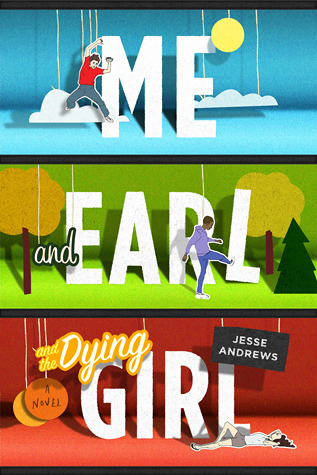A clever and candid play on the typical teen cancer story, “Me and Earl and the Dying Girl” remains offbeat and earnest while offering a homespun feel.
In this unconventional story of friendship, a self-loathing, awkward filmmaker named Greg is forced to hang out with his classmate after she is diagnosed with cancer. As the two begin to form an atypical bond, Greg sets out to make her a film with the help of his “co-worker” and friend Earl while watching his carefully-constructed social invisibility fade.
 This is a story about cancer. Therefore, when walking into theaters, audience members may expect to shed a few tears, but what they may not expect is that they will be constantly laughing as well. Director Alfonso Gomez-Rejon and screenplay writer Jesse Andrews tactfully integrate emotion and humor, ensuring the wry wit does not detract from the evocative sensitivity. Thus, the powerhouse duo creates a perfect synthesis of humor and emotion.
This is a story about cancer. Therefore, when walking into theaters, audience members may expect to shed a few tears, but what they may not expect is that they will be constantly laughing as well. Director Alfonso Gomez-Rejon and screenplay writer Jesse Andrews tactfully integrate emotion and humor, ensuring the wry wit does not detract from the evocative sensitivity. Thus, the powerhouse duo creates a perfect synthesis of humor and emotion.
Due to the involvement of cancer in its plot, “Me and Earl” has earned a lot of comparisons to the recent “The Fault in Our Stars (TFIOS).” However, “Me and Earl” escapes the formulaic melodrama of “TFIOS” and remains sophisticated while lacking TFIOS’s pretentiousness. Unlike the latter, “Me and Earl” does not take itself too seriously and even seems to satirize the typical cancer love story. Yet it somehow still integrates moments of poignant emotion. Additionally, “Me and Earl” does not manipulate viewers into shedding tears. It merely tells a story, crafting characters so relatable and sensitive that viewers cry as a sign of respect and love for them.
“Me and Earl” pairs witty, biting dialogue with spot-on timing to create effective avenues of comedy. The details, from the sardonic titles of Greg and Earl’s parody films to the hilarious chapter headings that split up the movie, make significant contributions to Me and Earl’s comedic mastery.
Although the dialogue combines both wit and poignancy, Rejon uses silence as a main storytelling device. The moments without dialogue – purposefully drawn out – are pregnant with meaning. It is the moments of silence that seemed to say the most about the internal conflicts and feelings of the characters. These moments were most able to add fluidity to the film without even the use of words. The sound of the silence seems to speak even louder than the sharp dialogue.
“Me and Earl” offers insight into each of its quirky, lovable characters, giving them layers that create real, flawed and relatable personas. Each character, even ones you would not expect to be more that flat characters to move the plot, has dimension. The characters bring out the personalities of one another and seem to work together to build on a beautiful narrative
In addition to the characters, the cast offered breathtaking performances all around. There is not one weak link in terms of acting performance. Thomas Mann (Greg) and Olivia Cooke (Rachel), for example, cloak an inner vulnerability with a witty, deadpan exterior, perfectly capturing both sides of their characters.
In general, “Me and Earl” pays close attention to detail with its dynamic cinematography, creating a brilliant, inventive choreography of unique camera angles, composition of shots and perspectives. These small details seem to tell a story of their own and are not just meant to add an indie quality to the film. Instead, these meticulous style choices truly further the emotion, the humor and the story.
So much more than a typical cancer story, the visually-enchanting “Me and Earl and the Dying Girl” is a feast for the eyes, mind and heart. “Me and Earl” tells a story with intensity, compassion and wit, proving it values the intelligence of its viewers.
My conclusion: 9/10

































![AI in films like "The Brutalist" is convenient, but shouldn’t take priority [opinion]](https://hilite.org/wp-content/uploads/2025/02/catherine-cover-1200x471.jpg)









































![Review: “The Immortal Soul Salvage Yard:” A criminally underrated poetry collection [MUSE]](https://hilite.org/wp-content/uploads/2025/03/71cju6TvqmL._AC_UF10001000_QL80_.jpg)
![Review: "Dog Man" is Unapologetically Chaotic [MUSE]](https://hilite.org/wp-content/uploads/2025/03/dogman-1200x700.jpg)
![Review: "Ne Zha 2": The WeChat family reunion I didn’t know I needed [MUSE]](https://hilite.org/wp-content/uploads/2025/03/unnamed-4.png)
![Review in Print: Maripaz Villar brings a delightfully unique style to the world of WEBTOON [MUSE]](https://hilite.org/wp-content/uploads/2023/12/maripazcover-1200x960.jpg)
![Review: “The Sword of Kaigen” is a masterpiece [MUSE]](https://hilite.org/wp-content/uploads/2023/11/Screenshot-2023-11-26-201051.png)
![Review: Gateron Oil Kings, great linear switches, okay price [MUSE]](https://hilite.org/wp-content/uploads/2023/11/Screenshot-2023-11-26-200553.png)
![Review: “A Haunting in Venice” is a significant improvement from other Agatha Christie adaptations [MUSE]](https://hilite.org/wp-content/uploads/2023/11/e7ee2938a6d422669771bce6d8088521.jpg)
![Review: A Thanksgiving story from elementary school, still just as interesting [MUSE]](https://hilite.org/wp-content/uploads/2023/11/Screenshot-2023-11-26-195514-987x1200.png)
![Review: "When I Fly Towards You", cute, uplifting youth drama [MUSE]](https://hilite.org/wp-content/uploads/2023/09/When-I-Fly-Towards-You-Chinese-drama.png)
![Postcards from Muse: Hawaii Travel Diary [MUSE]](https://hilite.org/wp-content/uploads/2023/09/My-project-1-1200x1200.jpg)
![Review: "Ladybug & Cat Noir: The Movie," departure from original show [MUSE]](https://hilite.org/wp-content/uploads/2023/09/Ladybug__Cat_Noir_-_The_Movie_poster.jpg)
![Review in Print: "Hidden Love" is the cute, uplifting drama everyone needs [MUSE]](https://hilite.org/wp-content/uploads/2023/09/hiddenlovecover-e1693597208225-1030x1200.png)
![Review in Print: "Heartstopper" is the heartwarming queer romance we all need [MUSE]](https://hilite.org/wp-content/uploads/2023/08/museheartstoppercover-1200x654.png)




